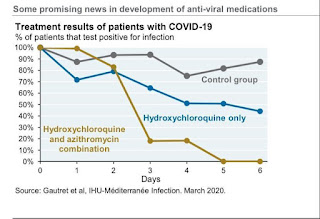Story goes like this,
A 34 yf has ingested unknown amount of TCA(Tricyclic Antidepressants) ,
The following may be true or false :
1-Pt with prominent anticholinergic toxicity from TCA poisoning, can benefit from physostigmine.
False
2-TCAs inhibit the fast sodium channels in the His-Purkinje system and myocardium
True
3-Most seizures are brief and self-limited
True
4-Class IA (eg, procainamide) andClass IC antiarrhythmics (eg, flecainide) can be used for refractory arrhythmias
False
5-ECG changes include R wave in AVR >3 mm; R to S ratio in AVR >0.7 &
Brugada pattern in (15%).
True
6-Consider phenytoin for ventricular dysrhythmias resistant to NaHCO3 and lidocaine and seizures resistant to benzodiazepines.
False
Recommendations:::
●Tricyclic antidepressant (TCA) usage remains common and overdose of TCA medications can be life-threatening. A summary table to facilitate the emergent management of TCA overdose is provided .
●Symptoms and signs of TCA intoxication generally consist of vital sign abnormalities, mental status changes, seizures, and anticholinergic toxicity. Sinus tachycardia and hypotension are common. Sedation is the most typical alteration in mental status, but confusion, delirium, or hallucinations may occur. Anticholinergic toxicity commonly manifests as hyperthermia, flushing, dilated pupils that respond poorly to light, delirium, intestinal ileus, and urinary retention.
●The clinical course of patients with TCA poisoning can be unpredictable, and patients who present immediately after ingestion may initially be well-appearing, only to deteriorate rapidly. Patients must be closely monitored. Maprotiline has been associated with a greater frequency of seizures and arrhythmias than other TCAs.
●Cardiac conduction abnormalities are common in patients with TCA poisoning. These abnormalities can degenerate into ventricular tachycardia and ventricular fibrillation (VT and VF), which occur in approximately 4 percent of TCA overdose cases. The electrocardiogram (ECG) is a most valuable tool in determining the extent of TCA poisoning. The following signs suggest cardiotoxicity:
•Prolongation of the QRS >100 msec
•Abnormal morphology of the QRS (eg, deep, slurred S wave in leads I and AVL)
•Abnormal size and ratio of the R and S waves in lead AVR: R wave in AVR >3 mm; R to S ratio in AVR >0.7
●Although a definitive diagnosis of TCA overdose can be made using serum measurements, such testing is typically not available to clinicians in a timely fashion and seldom plays a role in patient management. Clinically, the diagnosis of TCA poisoning is made based upon a history of ingestion, symptoms and signs consistent with the diagnosis, and characteristic ECG findings.
●Initial treatment of TCA overdose includes assessing and securing the patient’s airway, breathing, and circulation. TCA poisoned patients are frequently moribund and require intubation for airway protection and ventilation. Intravenous boluses of isotonic saline are used to treat hypotension. We recommend sodium bicarbonatetherapy for QRS duration >100 msec or any ventricular arrhythmia caused by TCA poisoning (Grade 1B). The initial dose of sodium bicarbonate is 1 to 2 mEq/kg. In adults, this may be given as two to three 50 mEq (50 mL) vials or prefilled syringes of 8.4 percent sodium bicarbonate given as a rapid IV push through a large bore IV.
●Benzodiazepines remain the treatment of choice for TCA-induced seizures. Reasonable initial treatment options in adults include diazepam 5 mg IV or lorazepam 2 mg IV. Unless bowel obstruction, ileus, or perforation is suspected, we suggest treatment with 1 g/kg of activated charcoal (maximum dose 50 g) in patients who present within two hours of ingestion (Grade 2C). Most patients respond well to standard care; for patients with refractory toxicity, management is reviewed in the text.
●Despite prominent anticholinergic toxicity in some patients, physostigmine is contraindicated as it is associated with cardiac arrest in the setting of TCA toxicity. Class IA (eg, procainamide) andClass IC antiarrhythmics (eg, flecainide) are also contraindicated.











